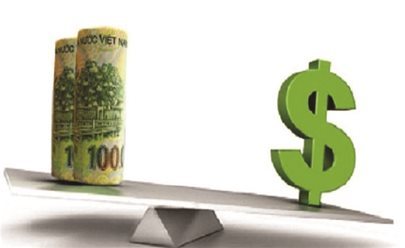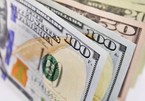Vietnam is one of 10 countries named in the watchlist for currency manipulation, according to the report on the macroeconomic and forex policies of the US’s largest trade partners released by the US Treasury Department on January 14, 2020.

Soon after the information was released, SBV made a timely response by issuing a notice to explain and analyze the reasons which led to the US decision.
In the US report dated May 2019, Vietnam for the first time was named among nine countries that needed supervision for currency manipulation, because it met two criteria – surplus in bilateral trade with the US and surplus in current balance.
The May 2019 report showed that the countries in the watchlist will continue to be monitored in the next two reviews. Vietnam was still in the watchlist of the January 2020 report, though Vietnam only meets one criterion – the trade surplus.
| The May 2019 report showed that the countries in the watchlist will continue to be monitored in the next two reviews. Vietnam was still in the watchlist of the January 2020 report, though Vietnam only meets one criterion – the trade surplus. |
Regarding the current balance surplus, the figure has dropped to 1.7 percent of GDP, lower than the level of 2 percent set by the US. Meanwhile, the intervened net purchase of foreign currencies in the forex market is just 0.8 percent of GDP, lower than the 2 percent set by the US.
SBV stressed that it made an intervention in the forex market in two ways, with both net purchases and net sales.
A high-ranking official of SBV said the central bank had positive working sessions with the US to clarify the issues put forward by the US. However, dealing with the bilateral trade surplus of $47 billion is the job of several parties, not just the SBV.
The adjustment of the current balance surplus and the two-way intervention in the forex market were made by SBV in the monetary policy management. Meanwhile, solving the problem of bilateral trade surplus requires the coordination of many ministries and branches.
If Vietnam is seen as a currency manipulator, it will bear a negative impact.
The government’s report in the latest briefing showed that Vietnam’s GDP had reached $266 billion by the end of 2019 and the import/export turnover had for the first time exceeded $500 billion.
With such a trade turnover, the import value of one week and one month has increased significantly. The forex reserves, therefore, also need to increase. Vietnam needs to develop the forex reserves and stabilize the exchange rate in a flexible way to lay a foundation for a sustainable macroeconomy and high-quality growth.
Mai Lan

Vietnam faces exchange rate risks when importing electricity
Vietnam plans to buy more electricity from neighbouring countries, but a big loss of VND3.09 trillion is pending.

Vietnam will not use exchange rate as tool to boost exports: central bank
The central bank believes that for an open economy like Vietnam, the sharp devaluation of the local currency will not help boost exports, but will do more harm than good.
 The State Bank of Vietnam (SBV) has many times affirmed that Vietnam has no intention of devaluing the local currency to gain advantages in trade with its partners.
The State Bank of Vietnam (SBV) has many times affirmed that Vietnam has no intention of devaluing the local currency to gain advantages in trade with its partners.